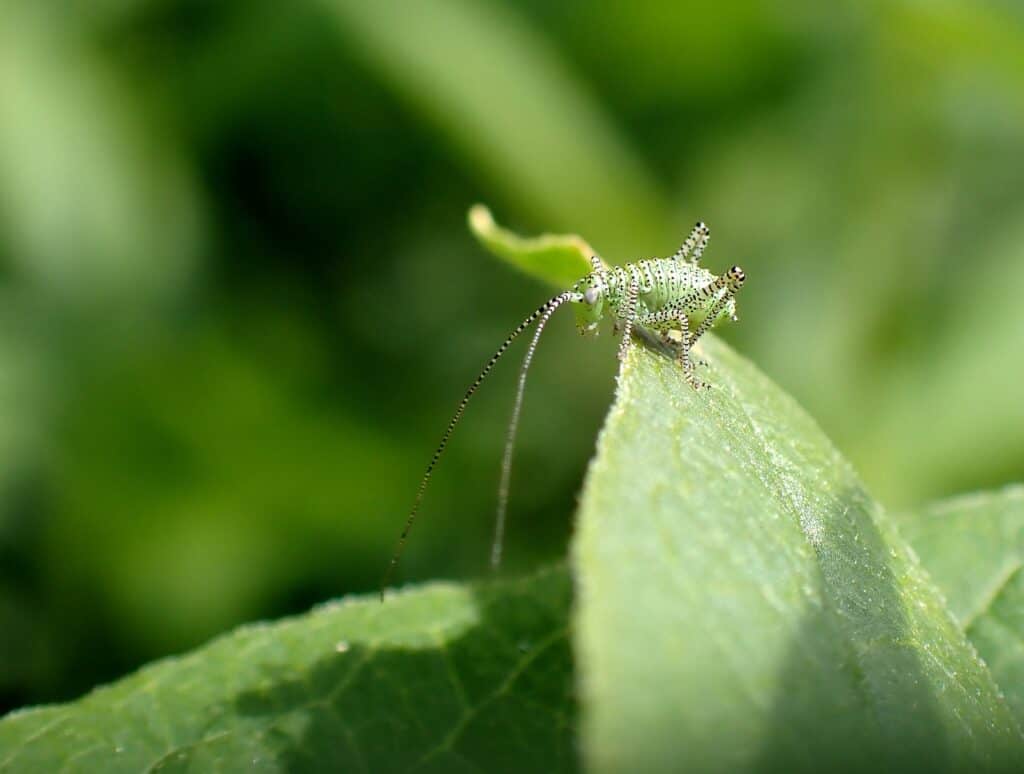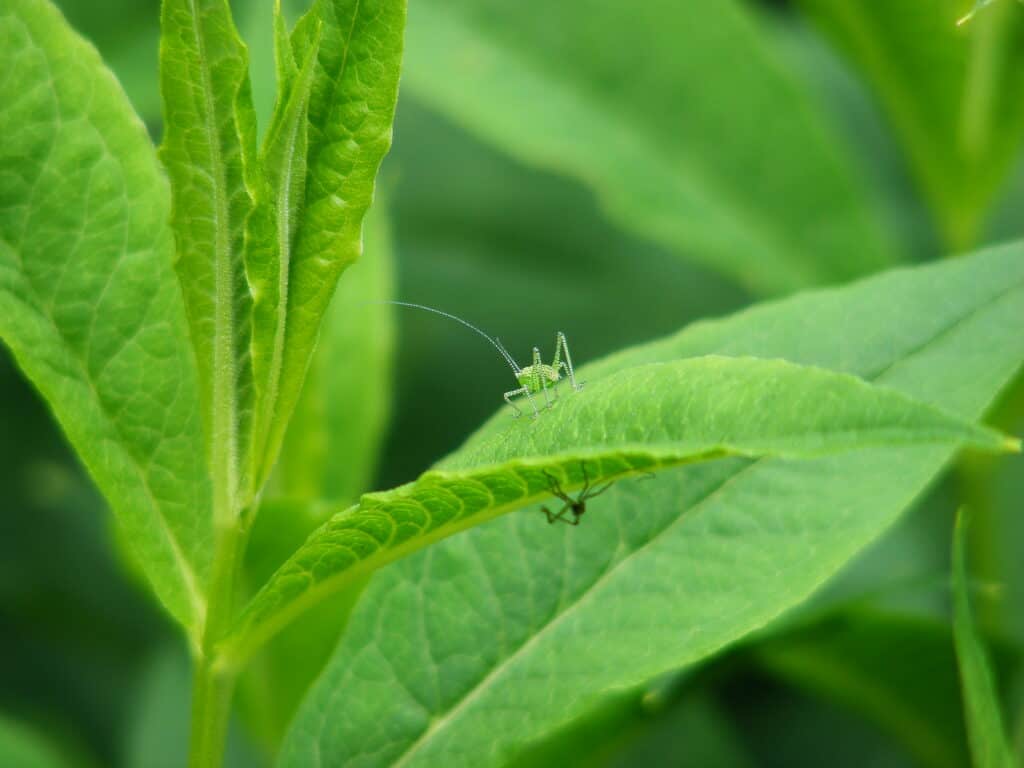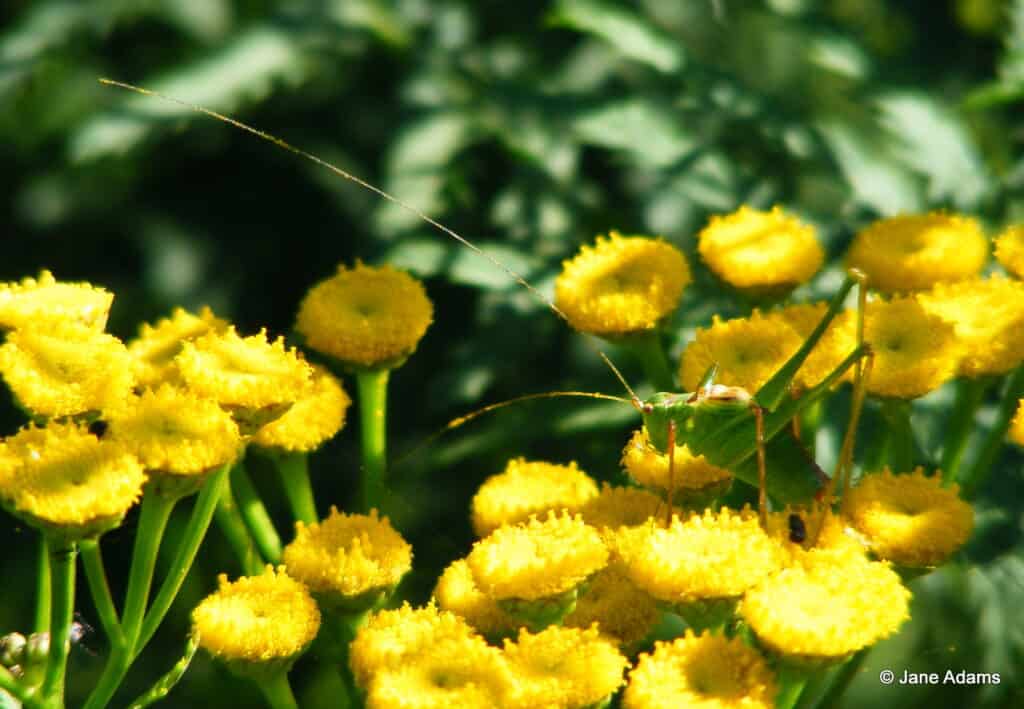Climate change and pesticides mean wildlife in our gardens is disappearing – writer Jane Adams urges us to look for an oddly cute vegan who won’t dance

As I stand in the middle of a flowerbed in my Dorset garden, I’m surrounded by insects. Worker bumblebees scurry in circles over flower heads, a small-white butterfly floats by like a paper plane, and an armoury of shieldbugs patrol the jungle of shrubs. It’s an idyllic June day. The sort you dream of in the depths of winter when you’re cold and tired. But there’s one insect that’s nowhere to be seen. The speckled bush-cricket.
Eventually, long antennae dangling in mid-air give its position away. As I follow the looped tendrils, they lead me to its speckled body, camouflaged against the leaves of a Michaelmas daisy. It’s tiny. A nymph, less than a centimetre long. As it turns its Jiminy Cricket face towards me, I swear it’s going to break into a song and dance routine.

Image: Jane Adams
Sadly, it doesn’t. Instead, as I move, its compound eyes follow me, and I’m left wondering just who is watching who. Most of the 23 cricket species we have in the UK are omnivores, but the speckled bush-cricket is strictly vegan. By gorging on young leaves, it will outgrow its skin and moult several times
until it reaches the two to three centimetres of adulthood. If the one I have found is a male, it will eventually
sing to find a mate by strumming the underside of its left forewing with its right forewing – but we won’t hear it.

The frequency of its clicking song, and its mates’ reply, are way beyond the limits of our human hearing. Crickets like the heat, so at the moment most species in Dorset don’t seem to be threatened by climate change. However, with so many insects disappearing from our gardens, there’s still a chance they could be next. So, it’s worth taking care of them – turn a blind eye to a bit of plant nibbling and steer clear of pesticides. Maybe then we’ll see this harmless and beguiling insect again next year.
by Jane Adams

